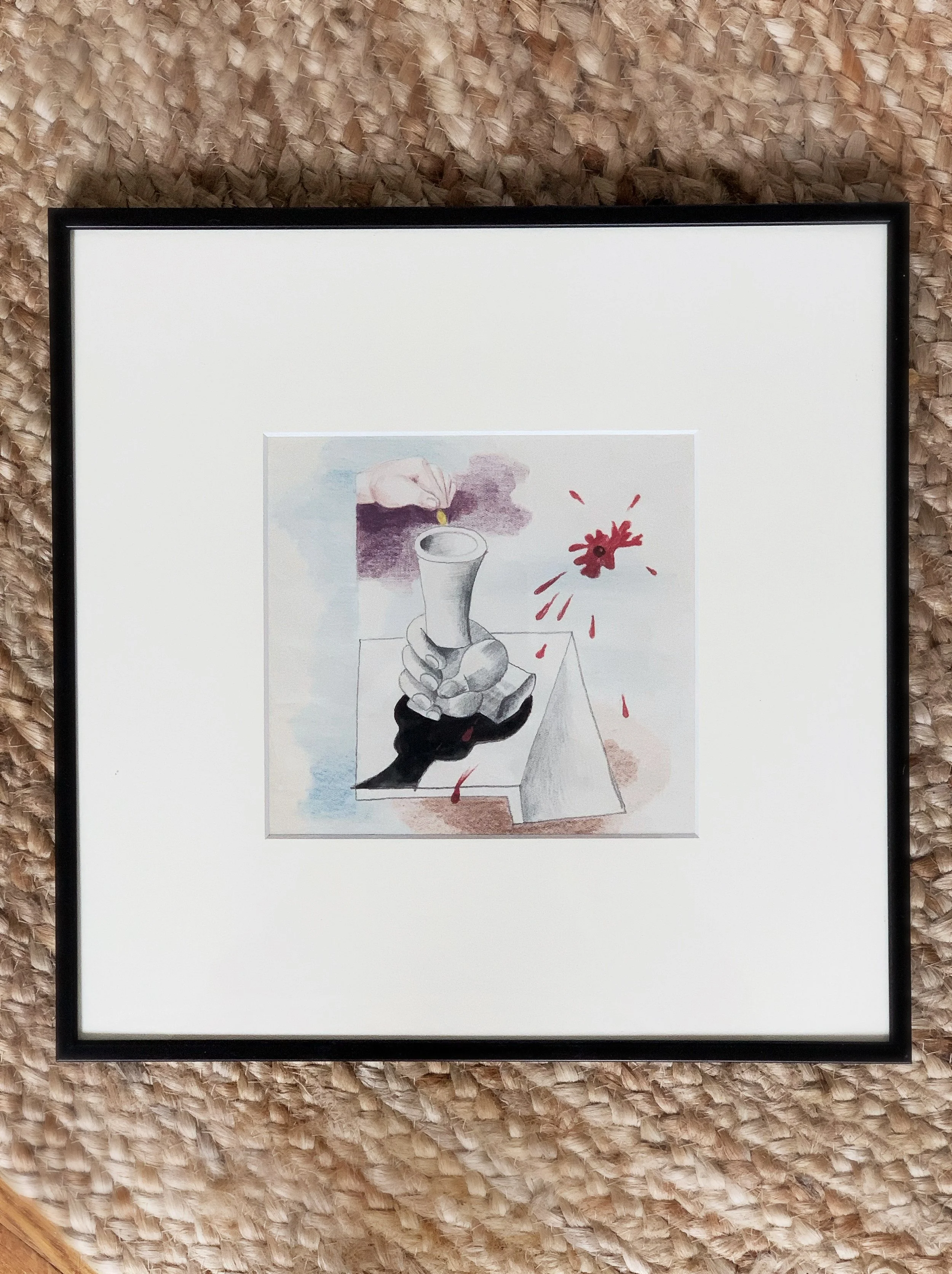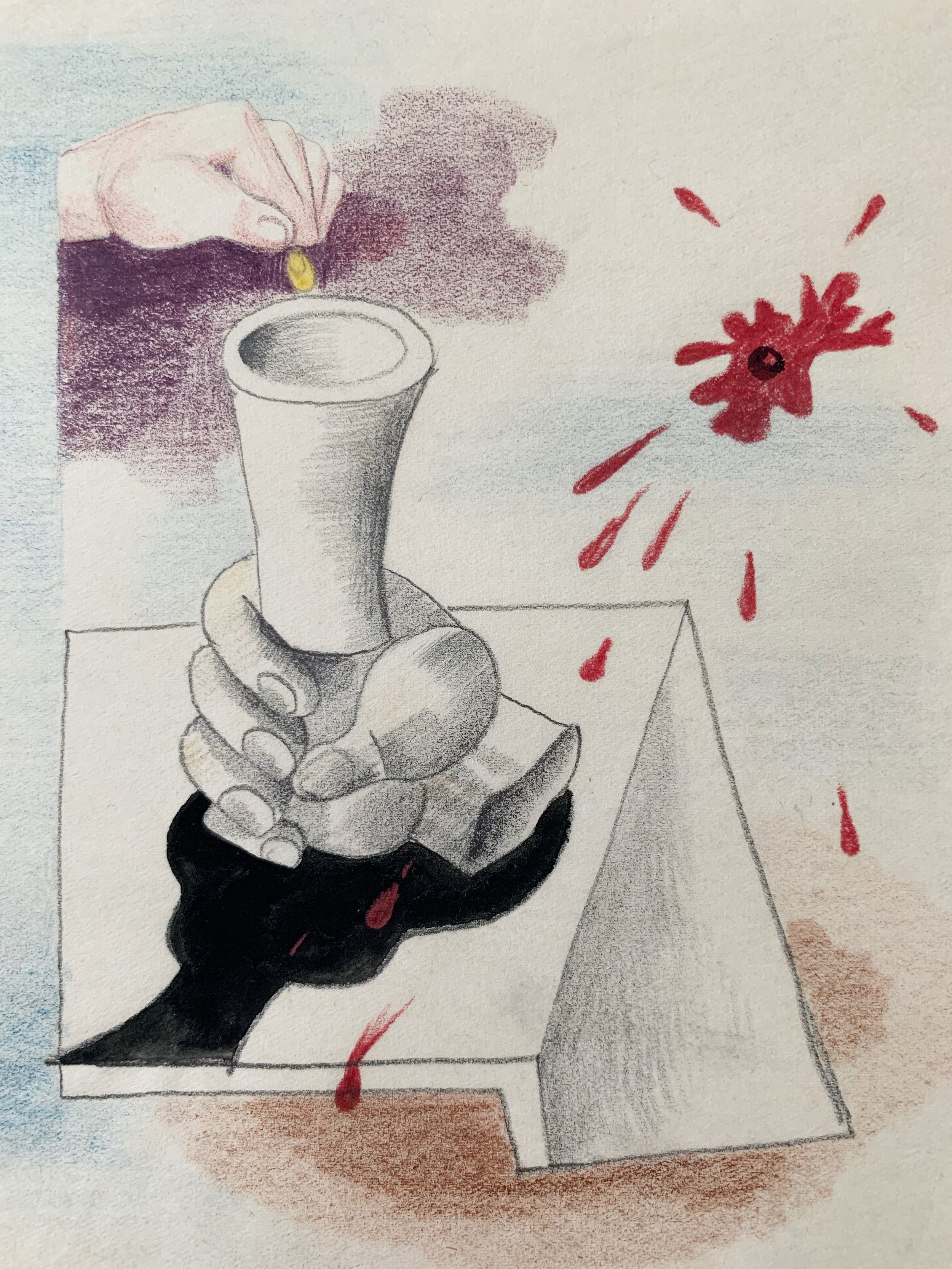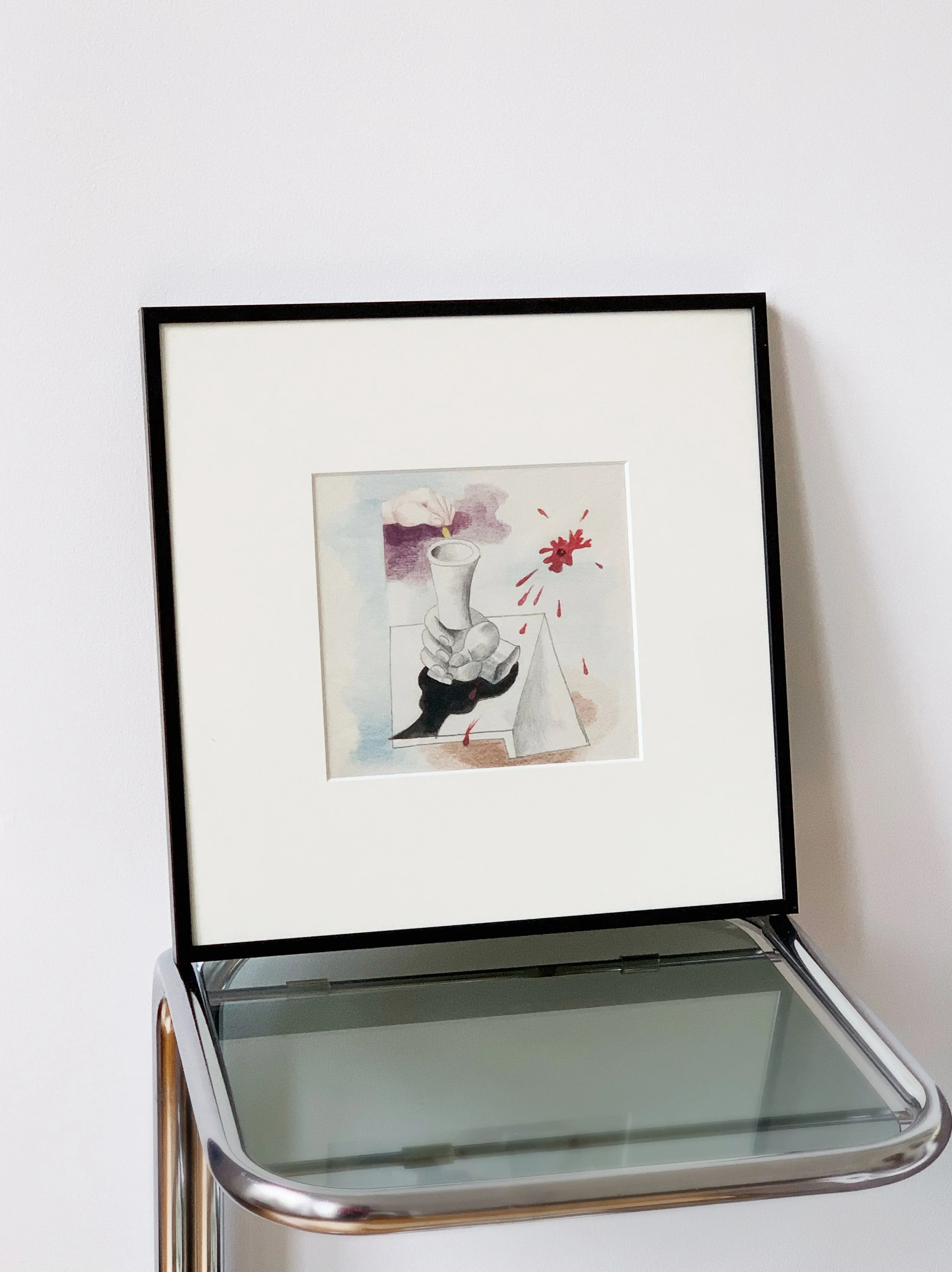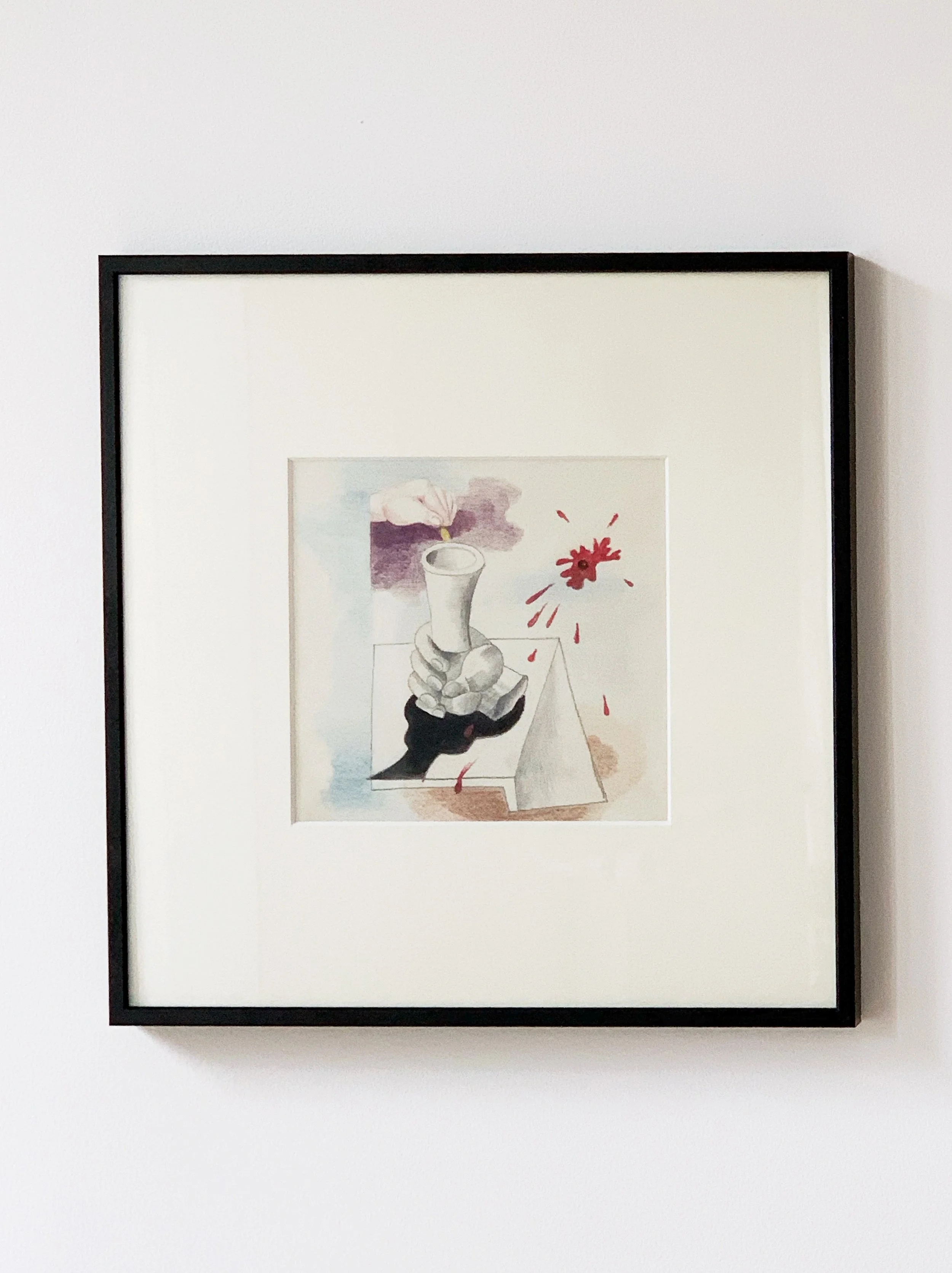Mathieu ROSIANU (1897-1969)




Mathieu ROSIANU (1897-1969)
Composition surréaliste, vers 1935
Encre, crayon et crayons de couleur sur papier
Cachet de l’atelier au verso
Dimensions de la feuille : 13 x 13 cm
Dimensions du cadre : 30 x 30 cm
-
Surrealist composition, ca. 1935
Ink, pencil and colored pencils on paper
Stamp of the workshop on the back
Size of the sheet : 5 x 5 inch
Frame : 11,8 x 11,8 inch
Né à Bucarest en 1897 d’un père officier de la garde nationale roumaine et d’une mère d’origine française, Mathieu Rosianu grandit dans un milieu bourgeois. Il obtient un premier diplôme de dessin en 1912. Il quitte la Roumanie en 1918 pour s’installer à Paris où il poursuit sa formation artistique aux Arts décoratifs avant d’être admis à l’École des beaux-arts en 1920 dans l’atelier d’Ernest Laurent (1859-1929). En 1923, il expose ses premières toiles au Salon d’Automne, au Salon des Tuileries et au Salon de la Société nationale des beaux-arts.
À l’aube des années 1930, Mathieu Rosianu travaille comme dessinateur chez Bitschenauer et chez Schweitzer avant de fonder sa propre maison de dessins pour tissus. Il produit de nombreux modèles pour d’importantes entreprises de textile françaises et américaines. Politiquement engagé, il fréquente des artistes proches de la mouvance communiste libertaire tels que Jean Hélion avec lequel il se lie d’amitié. En 1931, il participe aux réunions de l’Union des artistes professionnels du Groupe Artistique qui rassemble des artistes soutenant la revue Monde, hebdomadaire fondé par Henri Barbusse.
Dès 1932, Mathieu Rosianu compte parmi les membres fondateurs de l’Association des Écrivains et Artistes Révolutionnaires (A.E.A.R.) créée cette même année et réunissant des artistes engagés que sont Jean Lurçat, Jean Hélion, Auguste Herbin ou encore Édouard Pignon. Il contribue à la revue de l’A.E.A.R., Commune, pour laquelle il réalise avec son épouse Juliette Bajou plusieurs compositions graphiques. Très impliqué, il fait partie du comité d’initiative du collectif et participe à ce titre activement à l’organisation de la première Exposition des Artistes Révolutionnaires qui a lieu en 1934 et à laquelle prend part une dizaine d’artistes dont Francis Jourdain, Amédée Ozenfant et Auguste Herbin. Mathieu Rosianu rédige notamment la préface du catalogue de celle-ci, comme un manifeste. La même année, ses œuvres côtoient celles d’artistes surréalistes de renom que sont Salvador Dali et Man Ray à l’occasion de l’exposition intitulée Avertissement chez Marie Cuttoli, Galerie Vignon à Paris, et dont le propos s’inscrit en réaction à l'attitude des nazis envers l’art dit “dégénéré”.
En 1935, Mathieu Rosianu prend ses distances à l’A.E.A.R. et se consacre à la réalisation de projets décoratifs de soieries et de papiers peints sous le pseudonyme d’Émile Arbor. Ses créations rencontrent un vif succès à l’Exposition Universelle de 1937 où il se voit récompensé d’un Grand Prix avant que la Seconde Guerre mondiale ne vienne mettre un terme à cette activité.
Fidèle à la figuration, Mathieu Rosianu est soucieux de renouer avec la réalité chère aux artistes de l’entre-deux-guerres. Il s’attache à exalter la dignité des classes populaires et son œuvre s’inscrit en grande partie dans la mouvance d’artistes soulevant le rôle social de l’art. En opposition avec la peinture dite “de chevalet”, il est partisan d’une “peinture pour tous”*, une “peinture chargée d’émotions humaines”* et non pas une “peinture prétexte”*.
Le traumatisme de l’effroyable désastre des deux guerres et la souffrance qui s’empare de lui inspirent à l’artiste une œuvre plus sombre. Sa souffrance psychique s’exprime dans sa peinture qui demeurera pour lui une nécessité vitale. Il développe une obsession certaine pour des thèmes relatifs à l’obsession de la mort, à l’angoisse de la déconstruction et au deuil de l’enfant.
L’angoisse et la critique de la guerre transparaissent également dans le dessin à l’encre et aux crayons de couleurs que nous présentons. Il dénonce dans ce dernier l’absurdité de la guerre et le coût humain qu’elle a engendré. Il s’agit d’un bel exemple de son travail aux affinités surréalistes. Il repose sur un jeu d’optique en trompe-l’oeil et vise à abolir les présupposés des modes de représentation classiques. Réalisé autour de 1935, ce dessin traite de manière subtile du thème du tribut humain généré par la Première Guerre mondiale.
Born in Bucharest in 1897 to a father who was an officer in the Romanian National Guard and a mother of French origin, Mathieu Rosianu grew up in a middle-class environment. He obtained his first drawing diploma in 1912. He left Romania in 1918 to settle in Paris where he continued his artistic training at the Decorative Arts before being admitted to the École des Beaux-Arts in 1920 in the studio of Ernest Laurent (1859-1929). In 1923, he exhibited his first paintings at the Salon d'Automne, the Salon des Tuileries and the Salon de la Société nationale des beaux-arts.
At the beginning of the 1930s, Mathieu Rosianu worked as a draftsman for Bitschenauer and Schweitzer before founding his own design house for fabrics. He produced numerous designs for major French and American textile companies. Politically committed, he frequented artists close to the libertarian communist movement such as Jean Hélion with whom he became friends. In 1931, he participated in the meetings of the Union of Professional Artists of the Artistic Group, which brought together artists who supported the magazine Monde, a weekly founded by Henri Barbusse.
In 1932, Mathieu Rosianu was one of the founding members of the Association des Écrivains et Artistes Révolutionnaires (A.E.A.R.) created that same year and bringing together committed artists such as Jean Lurçat, Jean Hélion, Auguste Herbin and Édouard Pignon. He contributed to the A.E.A.R. magazine, Commune, for which he produced several graphic compositions with his wife Juliette Bajou. Very involved, he was part of the initiative committee of the collective and actively participated in the organization of the first Exposition des Artistes Révolutionnaires which took place in 1934 and in which a dozen artists took part, including Francis Jourdain, Amédée Ozenfant and Auguste Herbin. Mathieu Rosianu wrote the preface to the catalog, like a manifesto. That same year, his works were exhibited alongside those of renowned surrealist artists Salvador Dali and Man Ray at the exhibition entitled Avertissement at Marie Cuttoli's, Galerie Vignon in Paris, which was a reaction to the Nazis' attitude towards so-called "degenerate" art.
In 1935, Mathieu Rosianu distances himself from the A.E.A.R. and devotes himself to the realization of decorative projects of silks and wallpapers under the pseudonym of Emile Arbor. His creations met with great success at the 1937 World's Fair where he was awarded a Grand Prix before the Second World War put an end to this activity.
Faithful to the figuration, Mathieu Rosianu is anxious to revive the reality dear to the artists of the interwar period. He is committed to exalting the dignity of the working classes and his work is largely in line with the movement of artists raising the social role of art. In opposition to the so-called "easel painting", he is a supporter of a "painting for all "*, a "painting charged with human emotions "* and not a "pretext painting "*.
The trauma of the terrible disaster of the two wars and the suffering that took hold of him inspired the artist to create a darker work. His psychic suffering is expressed in his painting which will remain for him a vital necessity. He develops a certain obsession for themes related to the obsession of death, the anguish of deconstruction and the mourning of the child.
The anguish and the criticism of the war also show through in the ink and colored pencil drawing that we present. He denounces the absurdity of war and the human cost it has caused. It is a fine example of his work with surrealist affinities. It is based on a trompe-l'oeil optical game and aims to abolish the presuppositions of classical modes of representation. Made around 1935, this drawing deals in a subtle way with the theme of the human toll generated by the First World War.
* Cette oeuvre est vendue en l’état, sa nature de bien d’occasion emporte l’acceptation de l’acheteur quant à la possibilité qu’elle puisse comporter des marques d’usage, d’usure, de fragilité, d’ancienneté ou de restauration dues au passage du temps.
